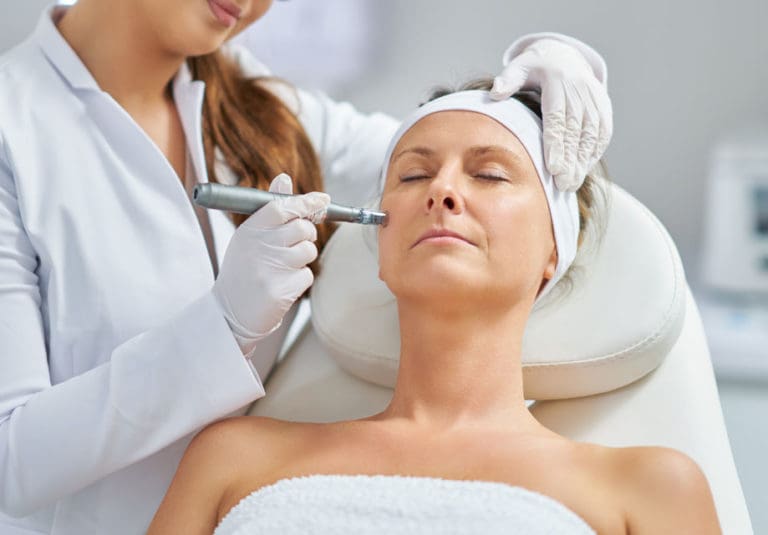
Microneedling has become one of the most sought-after skin treatments in recent years, praised for its ability to rejuvenate, repair, and refresh the complexion.
But what exactly happens when those tiny needles penetrate the skin? Let’s explore the fascinating science behind microneedling and the biological response it triggers.
What is Microneedling?
Microneedling, also known as collagen induction therapy, is a minimally invasive cosmetic procedure that uses fine needles to create controlled micro-injuries in the skin. These micro-injuries stimulate the body’s natural wound healing processes, leading to increased collagen and elastin production. The result? Firmer, smoother, and more youthful-looking, rejuvenated skin.
How Microneedling Works: A Breakdown of the Process
The treatment involves using a specialised device. At Face Medical near Manchester, we use the XCellaris Pro microneedling system – a motorised pen-like tool – to create thousands of tiny punctures in the skin’s surface. These micro-channels serve multiple purposes:
- They activate the skin’s healing response.
- They allow for deeper penetration of skincare products.
- They stimulate cellular renewal and regeneration.
Our wellness clinic in Heywood commonly performs microneedling (collagen induction therapy) on the face, but it can also be used to treat areas such as the neck and décolletage.
The Skin’s Response: What Happens Beneath the Surface?
Once the micro-injuries are made, the body immediately sets to work, activating a three-phase skin healing process:
1 Inflammatory Phase (Immediate Response)
As the needles puncture the skin, the body perceives these tiny wounds as injuries and triggers an inflammatory response. This phase is crucial because it initiates:
- Increased blood flow to the area, delivering oxygen and nutrients to support healing.
- The release of growth factors, such as platelet-derived growth factor (PDGF) and fibroblast growth factor (FGF), which promote tissue repair.
- Activation of immune cells to remove damaged tissue and prevent infection.
2 Proliferation Phase (Collagen and Elastin Production)
Over the next few days, fibroblast cells are activated to produce new collagen and elastin. These structural proteins are essential for maintaining skin’s firmness and elasticity. Microneedling enhances:
- The production of Type I and Type III collagen, improving skin strength and texture.
- Angiogenesis (formation of new blood vessels), which enhances overall skin health and radiance.
- The thickening of the epidermis, reducing fine lines, wrinkles, and scars.
3 Remodelling Phase (Long-Term Benefits)
In the weeks and months following the treatment, the newly formed collagen continues to mature and strengthen the skin. This phase leads to:
- Reduction in scars and hyperpigmentation.
- Improved skin tone and texture.
- Increased skin resilience and hydration retention.
Why Microneedling Works for a Range of Skin Concerns
The beauty of microneedling / collagen induction therapy lies in its versatility. The treatment is effective for:
- Fine lines and wrinkles
- Acne scars and stretch marks
- Hyperpigmentation and sun damage
- Enlarged pores and uneven skin tone
Final Thoughts: Science-Backed Skin Rejuvenation
Microneedling is a powerful skin rejuvenation treatment with well-documented scientific backing. By harnessing the skin’s natural ability to heal and regenerate, it offers a safe and effective solution for those looking to improve their complexion. If you’re considering microneedling, always seek treatment from a qualified professional to ensure the best results.
